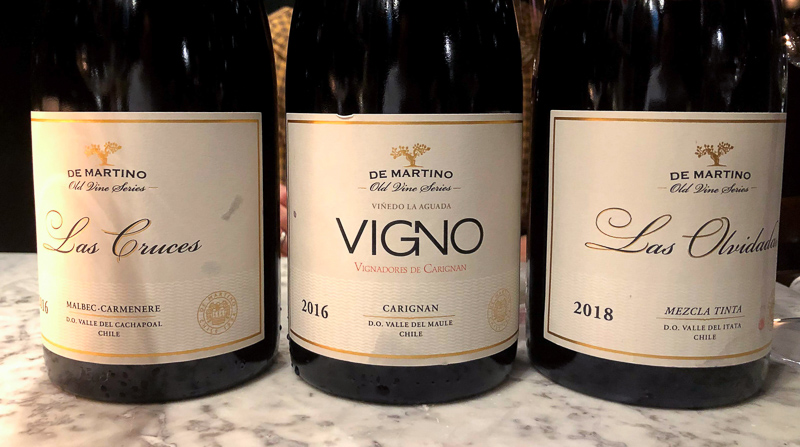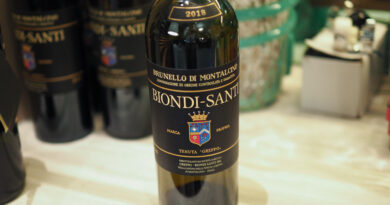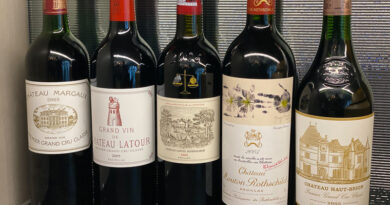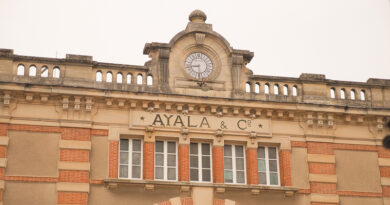De Martino: from excess to authenticity, and exploring southern Chile
Jamie Goode sits down to drink with Sebastián de Martino, who currently makes some of Chile’s most interesting wines. But it wasn’t always this way.
The De Martino family were from Abruzzo in Italy, and moved to Chile in 1934. Sebastián’s grandfather made wines in botti (large oak barrels) at sensible alcohol levels of around 13.5%. But his parents had access to small French oak barrels and started making more extracted wines. ‘We got to the point where we weren’t enjoying the wines,’ he said. ‘I remember a lunch with the family in 2005, and we opened a bottle,’ he recalls. ‘My grandfather said, can anyone drink this? The wines were 14.5% alcohol, over-extracted and undrinkable.’
With his brother Marco, as the fourth generation, and with talented, forward thinking winemaker Marcelo Retamal, they decided to change things. They wanted to establish a house style. ‘We weren’t enjoying the wines, so we said, what do we like? We are picking the grapes too late,’ he says. ‘We like wines harmonious and balanced with length rather than opulence. We shifted down two gears, picking early, using bottis again.’ This was in 2011. His parents had turned their old botti into furniture, so they had to buy new ones.

In Maipo they have a gravel terrace so they make the wines in a more Claret style (they both studied in Bordeaux), with 13% alcohol and gentle extraction. But they have also explored the south of the country. ‘Today we focus on the old vines in the south.’

He says that now they longer make wines for the market. ‘We just make the wines we like,’ says Sebastián. They are fine tuning their Maipo wines, they have purchased an old vineyard in the south (Itata), and they have also planted in Patagonia in a volcano.
They use wild yeast ferments, and they don’t adjust the acidity at all. ‘There is still a lot of fine tuning to do but we are in a happy place. We know where we are going: we are presenting our landscape and chasing harmony and balance.
The old vine wines are field blends from the Itata vineyard they purchased in 2013. It’s own-rooted with very old vines, and there are 2500 vines of Pais and San Francisco. These are 200-300 years old and look more like trees than vines. The soils are granitic. ‘It’s very difficult to find a benchmark for Pais,’ says Sebastián. ‘We don’t want to do something simple with it.’
De Martino Las Olvidadas 2018 Itata, Chile
80% Pais, 20% San Francisco. The grapes are destemmed using a manual bamboo destemmer. Fermented in an open top fermenter then aged in neutral barrels. This is the first vintage of this wine. Tight, complex and fresh. Tightwound with fresh red cherry fruit and good structure and some fine herbal notes. Compact and dense with nice acidity. Still youthful and structured with a bight redcurrant elegance and some sappiness. With time this will be brilliant. 94/100
De Martino Vigno La Aguarda Vineyard Carignan 2016 Maule, Chile
Part of the Vigno series of wines that many producers are making from old Carignan in Maule. This is from a vineyard palnted in 1955 and is a field blend that’s mostly Cariganan. Destemmed and aged in large botti (5000 litres) for 18 months to two years. Very aromatic and floral with raspberry fruit on the nose. Juicy, vibrant and pastille-like on the palate. So tangy and linear. Vibrant and zesty with a citrus finish. 91/100
De Martino Les Cruces Malbec Carmenere 2016 Cachapoal, Chile
This is a field blend from a vineyard planted in 1956. It’s the most northerly place you can dry farm in Chile. Wild ferment then two years aging in botti. Compact and dense with raspberry and cherry fruit, and some blackcurrant notes. Vivid and quite pure with freshness, structure and good acidity. This is unfurled and taut with lots of potential. 93/100
De Martino Gallardia Old Vine White 2018 Itata, Chile
70% Muscat and 30% Chasselas from a vineyard planted in 1905. Fermented in old barrels. Some minty hints on the nose. Lovely textured palate with grapes, citrus, herbs and a bit of mint. Has freshness and poise, and a zesty edge. 93/100
De Martino Viejas Tinajas Cinsault 2018 Itata, Chile
Clay amphora are traditional in the south. When the Spanish arrived they bought tinajas with them, and this is the oldest wine growing region in the new world. This wine was fermented in amphora made locally ranging in size from 250-1000 litres. It spent 3-4 weeks on skins. Supple and fine with lively herb and red cherry aromas. Nice fine-grained red cherries and herbs here with a sappy edge and fine grained red cherries and herbs. Has a sappy edge with fine green hints. Real elegance with a lovely mouthfeel: supple and delicious. 94/100
De Martino Viejas Tinajas Cinsault 2011 Secano Interior (Itata), Chile
This is the first vintage. Aromatic cherry nose with some spice and a slightly savoury, baked edge. The palate is supple and spicy with some earthy hints. Spicy and a bit peppery. Drying on the finish so drink now. 91/100

De Martino Viejas Tinajas Muscat 2018 Itata, Chile
This spends 6-7 months on skins, and the only SO2 addition is a little before bottling. Beautiful aromatics: floral, passionfruit, grapefruit, some table grapes. The palate has lovely fruit with grapey richness but also citrus and a hint of earthiness from the tinaja. So pretty, layered and complex. 93/100
De Martino Viejas Tinajas Muscat 2012 Secano Interior (Itata), Chile
Debut vintage. Orange/gold in colour. Complex, fresh and layered with some waxy, nutty citrus fruit and some table grape richness. Has depth to it with a savoury, structured edge and hints of mint. Wax and herb notes, too. Quite lovely. 94/100
See also: an earlier report on De Martino from 2013
Find these wines with wine-searcher.com




